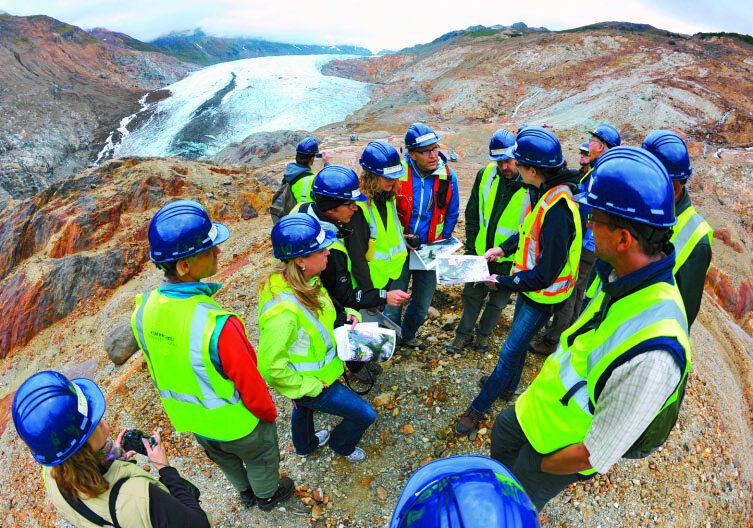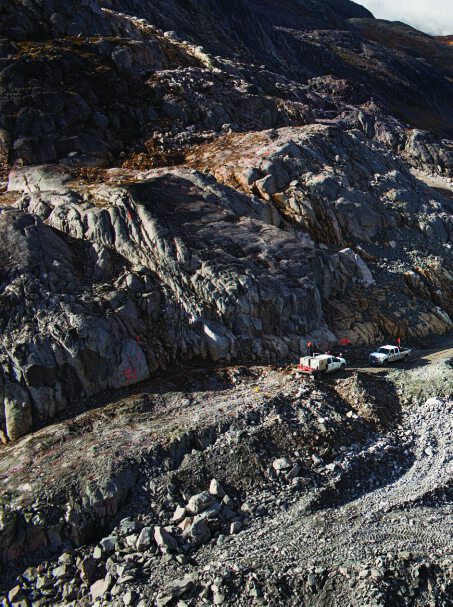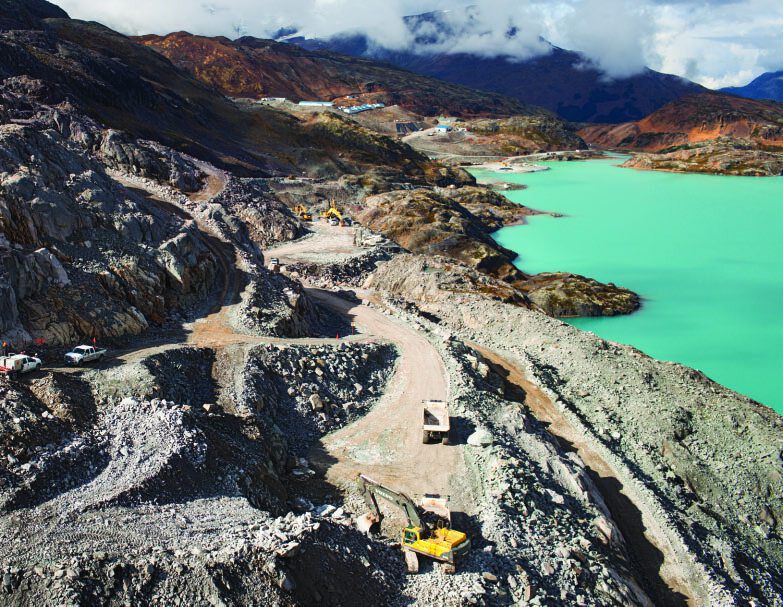By now, most people who live in British Columbia realize that the mineral exploration industry in this province is not enjoying its best days. But in case anyone thinks otherwise, the Ministry of Energy and Mines has released data that shows that the difficulties the industry has been experiencing lately are very real.
Mineral exploration expenditures rose from $463 million in 2011 to $680 million in 2012, and then fell to $476 million in 2013 and even lower to $338 million in 2014. Exploration metres drilled told a similar story, rising from 1,040,000 metres in 2011 to 1,090,000 metres in 2012 before dropping to 650,000 metres in 2013 and then to 500,000 metres in 2014.
These less-than-stellar results notwithstanding, mineral explorers remain optimistic that they will soon see the light at the end of the tunnel. British Columbia is still the land of opportunity, especially mineral exploration opportunity. Many of those opportunities are in northwestern B.C. In 2013, geologists Jeff Kyba and Joanne Nelson reported that most of the major porphyry- and intrusion-related gold copper deposits there occur within two kilometres of a regional stratigraphic contact.
According to Kyba and Nelson, subduction and volcanism took place 175 million to 220 million years ago along a 200-kilometre, horseshoe shaped arc. Close to that arc, which they call “the red line,” are such well-known deposits as Kerr-Sulphurets-Mitchell (KSM), Brucejack, Eskay Creek, Schaft Creek and Red Chris. “The red line represents the contact between two areas of volcanic activity, one older and [one] younger,” says Kyba.

The evidence strongly supports the significance of the red line. “Within two kilometres of the line, there are 398 known mineral occurrences, and within five kilometres there are 657,” says Kyba. Kyba, northwest regional geologist with the BC Ministry of Energy and Mines in Smithers, did fieldwork in 2013 and 2014 in the region, and discovered a significant connection between the red line and known deposits in the area.
Since Kyba and Nelson, who is a senior mapping geologist at the BC Geological Survey, reported their findings, prospectors have jumped on the data. “Over $220,000 has been spent in staking fees on mineral claims in an area covering almost 126,000 hectares around the red line,” Kyba says. The red line shows that explorers in B.C. can take advantage of a large supply of public information that is available at low or no cost.
Near Kyba and Nelson’s red line lies Seabridge Gold Inc.’s KSM project. According to Seabridge, KSM is one of the largest undeveloped gold projects in the world. Proven and probable reserves total 38.2 million ounces of gold and 9.9 billion pounds of copper. In 2013, Seabridge found a new deposit, the Deep Kerr, which has the highest metal values discovered at KSM to date. An initial resource estimate for Deep Kerr released in early 2014 confirmed an inferred resource of 515 million tonnes grading 0.53 per cent copper and 0.36 grams per tonne gold (6.1 billion pounds of copper and 5.9 million ounces of gold).
A new exploration program began in June 2014 to expand Deep Kerr and to search for additional higher-grade deposits. In September 2014, the company announced the discovery of a highergrade deposit beneath the Iron Cap deposit. Exploration in 2013 and 2014 at KSM added a total of almost one billion tonnes of better-grade resources. In May 2015 a new drill program was started at Deep Kerr. The main targets are a possible higher-grade core zone beneath Mitchell, KSM’s largest deposit, and an expansion of the block-cave shapes that would be mined from underground at Deep Kerr.
Thanks to all of this good news, Seabridge has had no difficulty raising money, says chairman and CEO Rudi Fronk. “We’re in a unique situation,” he says. “In addition to a great asset, we have a solid shareholder base that is about 50/50 institutional and retail. It’s a good mix for us. The investors understand what we’re trying to do at KSM, and, as a result, we have been able to raise funds in any market condition.”
Fronk says an important reason for Seabridge’s ability to raise money is its consistent message to shareholders. “In every annual report we explain what we did in the previous year and lay out our direction for the next year,” he says. Fronk says flow-through shares are “a great structure” for raising money. “The last three or four flow-throughs raised investment that was at a premium of 25 percent or more to our share price.”
Fronk says Seabridge is looking ahead to the future. “KSM is the largest undeveloped gold-copper deposit in the world,” Fronk says. “It’s beyond our ability to develop it ourselves. We want to attract a partner, one of the majors, to develop it. There are fewer than 10 companies in the world who can do the job, and we’ve been talking to them.”

Another high-profile project that lies near the red line is Pretium Resources Inc.’s 100-per-cent-owned, advancedstage Brucejack project. Brucejack is part of a largely unexplored land package of over 103,000 hectares. The focus of the project is the Valley of the Kings, which contains high-grade visible gold stringers in a lower-grade gold quartz stockwork system. A feasibility study completed in June 2014 has outlined proven and probable mineral reserves in the Valley of the Kings of 6.9 million ounces of gold (13.6 million tonnes grading 15.7 grams per tonne gold). Permitting is underway for an underground mine at Brucejack.
Pretium has found the market challenging for raising money. But in January 2015, the company closed a non-brokered private placement with Zijin Mining Group Ltd. that raised almost $81 million. Zijin is a gold, copper and non-ferrous metals producer and refiner in China. Pretium intends to use the proceeds from the offering to fund capital expenditures at Brucejack, including the procurement of long-lead items and camp infrastructure.
Shaoyang Shen of Zijin was appointed to Pretium’s board of directors. Pretium president Joe Ovsenek says the deal was good for both his company and for Zijin. “The deal gave the Chinese an interest in a premium gold project, the Valley of the Kings,” he says. “Zijin got just under 10 per cent of Pretium. And it gave us the opportunity to raise financing in one tranche and to maintain the momentum of the project. Construction began in September of this year.”

Ovsenek says the deal was well timed. “In December 2014, the price of gold was way down, and there was talk of it going even lower,” he says. “We got the financing when we were able to put it to good use.” Ovsenek says negotiations with Zijin took nine months. “We found that Asian investors have a longer time horizon than North Americans,” he says. “It’s a different mindset. Instead of thinking one quarter out, they think in terms of five years. As a result, due diligence can take longer.”
Another B.C.-based company that lies along the red line is IDM Mining Ltd., whose flagship Red Mountain gold project hosts a high-grade resource. President and CEO Rob McLeod says Red Mountain is amenable to bulk underground mining. Over $40 million in work has been completed on the property by previous operators. That includes 127,300 metres of surface and underground drilling; 2,000 metres of underground development; and advanced environmental, metallurgical and engineering studies.
A National Instrument 43-101-com- pliant resource estimate of the project was completed in 2013. At a three-grams per-tonne cut-off, the resource estimate consists of 1,138,000 tonnes averaging 8.7 grams per tonne gold in the measured category, 473,000 tonnes at 7.7 grams per tonne gold in the indicated category and 807,000 tonnes at 5.4 grams per tonne gold in the inferred category.

McLeod says IDM has been financing itself with a combination of flow through shares and hard-dollar raises. “Now that we’re in the pre development stage at Red Mountain, we’re looking at all of our options.” He says the challenging times mean that exploration companies need to be creative to raise the money they need to move a project along. One of those creative ways is streaming, whereby a funder makes an agreement with a company to purchase all or part of its future precious metals production at a low, predeter mined price on which both parties agree. The streamed resource is often a byprod uct of the mining company’s operations.
There are also other sources of financ ing. “For example, market your company to non-traditional sources that you haven’t approached in the past,” says McLeod. “Use social media, such as Twitter and LinkedIn, to create brand awareness. And don’t forget about Asian investors.”
